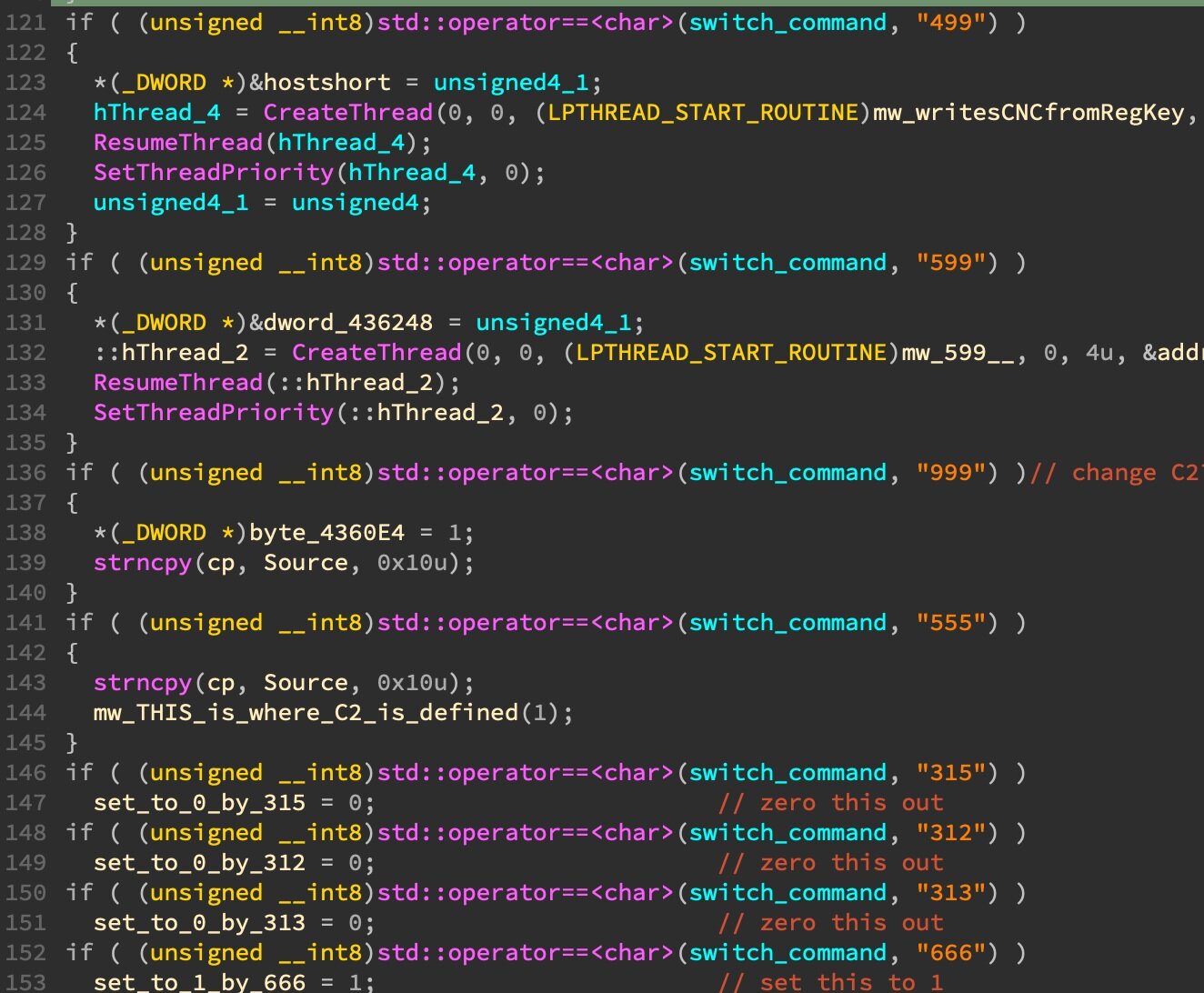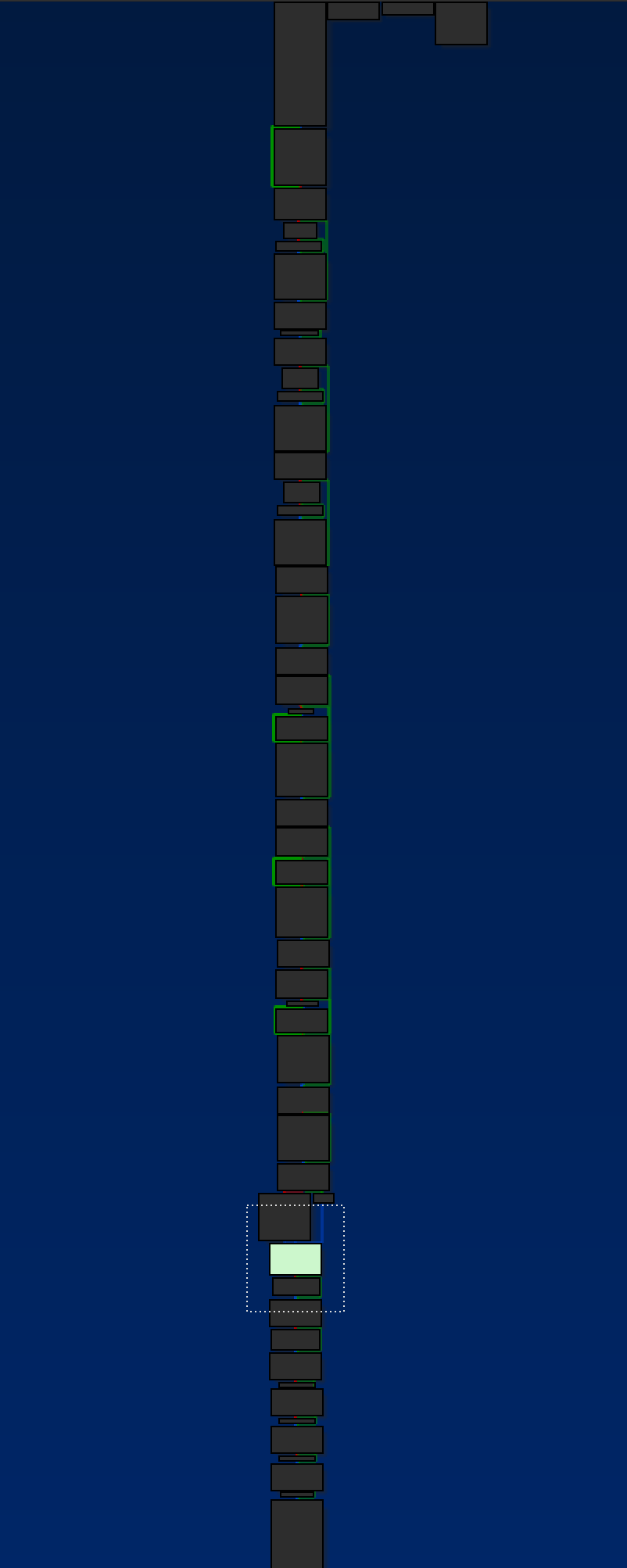Nazar: A Lost Amulet
Acknowledgements: Special thanks to Silas Cutler for reversing guidance and to special friends (you know who you are) for visibility and insights.
Accompanying talk presented on 04.22.2020 @ Virtual OPCDE #3 (Video)
Update #1 (04.22.2020) : Fixed some miscategorized hashes in the Appendix
Update #2 (04.23.2020): Reversing of EYService by @malwarelabpl available here.
Update #3 (04.28.2020): Additional reversing of the EYService comms protocol by @maciekkotowicz available here. I’ve added and corrected to reflect the new insights.
Update #4 (05.05.2020): Amazing in-depth analysis of Nazar components by Itay Cohen from Checkpoint available here.
Territorial Dispute continues to be an excellent resource for avid researchers undaunted by the thought of taking pointers from misplaced classified materials. For those blissfully unaware of TeDi, among the ShadowBrokers leaks we find two files far more noteworthy for threat intelligencers than the exploits and tools. Dr. Boldizar Bencsath and his team at CrySyS lab were the first to notice the value of ‘sigs.py’ and ‘drv_list.txt’. The former includes filenames and registry keys associated umbrellaed under a moniker ‘SIG[1-45]’. The CrySyS lab report is an excellent starting point to understand the contents of TeDi.
Since the release of this report in 2018, further signatures have been identified by Kaspersky’s GReAT team and by Silas Cutler and I during our time at Chronicle’s Uppercase. Today, I’ll focus on a specific misidentified TeDi signature, SIG37. These signatures are low fidelity –composed of a combination of paths, filenames, and registry keys– and thereby prone to misidentification. In this case, CrySyS lab tentatively identifies SIG37 as ‘IronTiger_ASPXSpy’ –a presumably Chinese APT group better known as ‘Emissary Panda’ among other names. CrySyS lab points to a file in VirusTotal whose community comments suggest the aforementioned detection.
Automated community comment with the misleading detection
As many VT obsessives know, all sorts of misleading and undesirable files make their way into the VT corpus and fire off our YARA rules. Upon closer inspection, the file above is a 15mb memory dump of a McAfee installer, perhaps by someone interested in their malware signatures. As such, it’s a giant malformed mess of unrelated indicators. With that understanding, we can discard the commented detection and return to the abject mystery of identifying SIG37. The signature itself refers only to a single filename: ‘godown.dll’
The Nazar APT
SIG37 function from ‘sigs.py’
Armed with this spartan indicator, what we find is a previously unidentified cluster of activity possibly ranging as far back as early as 2008 –though more likely centered around 2010–2013 that I’ve nicknamed ‘Nazar’. The name is derived from debug paths left alongside Farsi resources in some of the malware droppers described below. Those PDB paths refer to a source root folder: ‘khzer’.


Native Farsi speakers pointed me in the direction of the term ‘nazar’ –roughly translating to ‘supervision’ or ‘monitoring’– transliterated and mangled from Persian to Roman characters. A more recognizable alternative interpretation is the nazar amulet used for protection against ‘evil eye’. Some level of speculation is involved so I won’t belabor the point beyond emojying the name ( 🧿) for tweetable convenience.
‘Evil eye’ protection amulets– the better known ‘hamsa’ (left) or ‘nazar’ (right)
It’s hard to understand the scope of this operation without access to victimology (e.g.: endpoint visibility or command-and-control sinkholing). Additionally, some possible timestomping muddies the water between this operation possible originating in 2008-2009 or actually coming into full force in 2010-2013 (the latter dates being corroborated by VT firstseen submission times and second-stage drop timestamps). There’s a level of variable developmental capability visible throughout the stages. Multiple components are abused commonly-available resources, while the orchestrator and two of the DLL drops actually display some developmental ingenuity (in the form of seemingly novel COM techniques). Far from the most advanced coding practices but definitely better than the sort of .NET garbage other ‘Farsi-speaking’ APTs have gotten away with in the past.
Somehow, this operation found its way onto the NSA’s radar pre-2013. As far as I can tell, it’s eluded specific coverage from the security industry. A possible scenario to account for the disparate visibility between the NSA and Western researchers when it comes to this cluster of activity is that these samples were exclusively encountered on Iranian boxes overlapping with EQGRP implants. Submissions of Nazar subcomponents from Iran (as well as privately shared visibility into historical and ongoing victimology clustered entirely on Iranian machines) could support that theory. Perhaps this is an internal monitoring framework (a la Attor) but given the sparse availability of historical data, I wouldn’t push that beyond a low-confidence assessment, at this time.
I hope interested researchers take this as an initial introduction and open challenge to contribute to what may prove a previously unknown threat actor, and encourage them to leverage their greater abilities and visibility to contribute to the ongoing research. I’ll gladly update this post with the contributions and publications of others.
Technical Breakdown
Nazar employs a modular toolkit where a main dropper silently registers multiple DLLs as OLE controls in the Windows registry via ‘regsvr32.exe’. An orchestrator (‘Data.bin’), disguised as the generic Windows service host process (‘svchost.exe’), is registered as a service (‘EYService’) for persistence. The DLLs are a combination of custom type libraries and resourceful repurposing of more widely available libraries for nefarious purposes.
Nazar component structure
The Dropper: ‘GpUpdates.exe’
| SHA256 | 4d0ab3951df93589a874192569cac88f7107f595600e274f52e2b75f68593bca |
| SHA1 | 48f99144bb9fdf379926e85fbe3caa462089f397 |
| MD5 | 6b3116580d29020b9c259877ac18a7fd |
| Filename | GpUpdates.exe |
| Timestamp | 2009-10-31 12:28:29 |
| First Submission | 2013-02-04 04:23:00 |
The droppers are misidentified as packed by Armadillo but in reality they’re built using now defunct Chilkat software, ‘Zip2Secure’ to create self-extracting executables. The packing alone has led the droppers to be detected under generic AV detections but the subcomponents have low-to-no detections at this time.
The Setup Agent: ‘Distribute.exe’
| SHA256 | 839c3e6ba65e5d07a2e0c4dd4a2c0d7ae95a266431dd3f8971b8a37d17b1ddf6 |
| SHA1 | 05122010cde4dcd1b4cd55de7b7d442efda19976 |
| MD5 | c1ab32afb0e2d7b7b1cad3fb831e9373 |
| Filename | Distribute.exe |
| Timestamp | 2012-03-17 11:07:53 |
| First Submission | 2013-02-04 04:26:29 |
The Zip2Secure configuration entrusts the distribution of the files contained therein to ‘Distribute.exe’, which places the files and silently registers the subcomponents with regsvr32.exe.
The Orchestrator: ‘EYService’
| SHA256 | 2fe9b76496a9480273357b6d35c012809bfa3ae8976813a7f5f4959402e3fbb6 |
| SHA1 | 79f2b98821c1e2717a0495e6c5c76a0147b21aae |
| MD5 | a9ff31c8db6d4e70829bf5db062d1b9c |
| Filename | Data.bin, svchost.exe, EYService |
| Timestamp | 2012-04-30 05:12:18 |
| First Submission | 2013-02-04 08:43:33 |
The main functionality orchestrating the different subcomponents is contained within Data.bin, later renamed to ‘svchost.exe’. The orchestrator takes 17 different three digit codes to divert functionality within a giant switch statement. Some of the codes have not been fully implemented up to the latest samples I’ve found so far, which further suggests a continued developmental effort.

[Updated 04.28.2020]: Thanks to @maciekkotowicz’s great work, we now know that EYservice is in fact a passive backdoor with no hardcoded infrastructure. The backdoor is listening for UDP packets on port ‘1234’ and allows for a ping response, victim info request, or file download. For further details, please refer to the MalwareLab.pl blog.
The Subcomponent DLLs
Subcomponent DLLs include multiple abused resources as well as a couple of seemingly custom libraries. The former include the common LAME MP3 encoding library (UPX packed) as well as a more obscure bitmap library. These are abused to implement hot mic and screengrab features, respectively. Another subcomponent is the ‘hodl.dll’ (internally named ‘keydll3.dll’) library used for keylogging. This appears to be a more common keylogger but that claim could use further scrutiny.
Finally, the custom libraries are ‘godown.dll’ (our original indicator) as well as ‘filesystem.dll’. Both are treated as type libraries and registered as OLE controls. The Filesystem library includes functionality to enumerate attached drives and traverse folder structures. The GoDown library is used for system shutdown. [Updated 04.28.2020]
For a more comprehensive breakdown of these components, refer to the Checkpoint Research blogpost [Updated 05.05.2020].
A Further Oddity – The MicroOlap Packet Sniffer
A core function of EYService includes a further drop, a packet sniffer. The orchestrator will unpack and drop a kernel driver (pssdk41.vxd, pssdk41.sys) used to sniff packets from the victim machine’s interfaces. The packets are then parsed looking for something in particular. Perhaps this allows for a sneaky means of command-and-control or more sophisticated uses. At this time, I’ve not determined what it’s parsing in particular.
Interestingly, the packet sniffer is also referenced in the EQGRP drv_list.txt. Other versions are also referenced, as shown in the image below:
Interestingly, focusing on the alternate filenames brought up an earlier version of this Nazar orchestrator (sha256: 1c02043ca00d087f1aac0337f89bf205985e1f20641bf043c9b7b99e0c9dc002). This earlier version drops ‘pssdk31.drv’ instead of the 4.1 version mentioned above.
Avenues for Further Research
SIG37 has proven a rewarding mystery, unearthing a previously undiscovered subset of activity worthy of our attention. Apart from several places where more skilled reverse engineers can contribute to better understanding the samples already discovered, there’s an opportunity for threat hunters with access to diverse data sets and systems to figure out just how big this iceberg really is. Are we looking at an internal surveillance framework? Is this part of an already known cluster of activity? Or can we add another predatory animal to our overpopulated zoo?
Happy Hunting!
Appendix – Technical Indicators
Nazar Hashes
gpUpdates.exe
4d0ab3951df93589a874192569cac88f7107f595600e274f52e2b75f68593bca
d34a996826ea5a028f5b4713c797247913f036ca0063cc4c18d8b04736fa0b65
eb705459c2b37fba5747c73ce4870497aa1d4de22c97aaea4af38cdc899b51d3
d9801b4da1dbc5264e83029abb93e800d3c9971c650ecc2df5f85bcc10c7bd61
Unnamed Droppers
75e4d73252c753cd8e177820eb261cd72fecd7360cc8ec3feeab7bd129c01ff6
1110c3e34b6bbaadc5082fabbdd69f492f3b1480724b879a3df0035ff487fd6f
Distribute.exe
6b8ea9a156d495ec089710710ce3f4b1e19251c1d0e5b2c21bbeeab05e7b331f
svchost.exe
2fe9b76496a9480273357b6d35c012809bfa3ae8976813a7f5f4959402e3fbb6
Filesystem.dll
1110c3e34b6bbaadc5082fabbdd69f492f3b1480724b879a3df0035ff487fd6f
Godown.dll
967ac245e8429e3b725463a5c4c42fbdf98385ee6f25254e48b9492df21f2d0b
8fb9a22b20a338d90c7ceb9424d079a61ca7ccb7f78ffb7d74d2f403ae9fbeec
hodll.dll
0c09fedc5c74f90883cd3256a181d03e4376d13676c1fe266dbd04778a929198
Abused Common Resources
pssdk41.sys
048208864c793a670159723b38c3ea1474ccc62e06b90833bdf1683b8026e12f
ViewScreen.dll
5a924dec60c623cf73f5b8505e11512ad85e62ac571a840ab0ff48d4a04b60de
lame_enc.dll
c84100d52c09703e32951444bd7ba4e22c5d41193e7420aacbbc1f736f4c4e1f
0091e2101f00751c4020ef8e115cfe12a284c9abacc886f549b40a62574a7510






